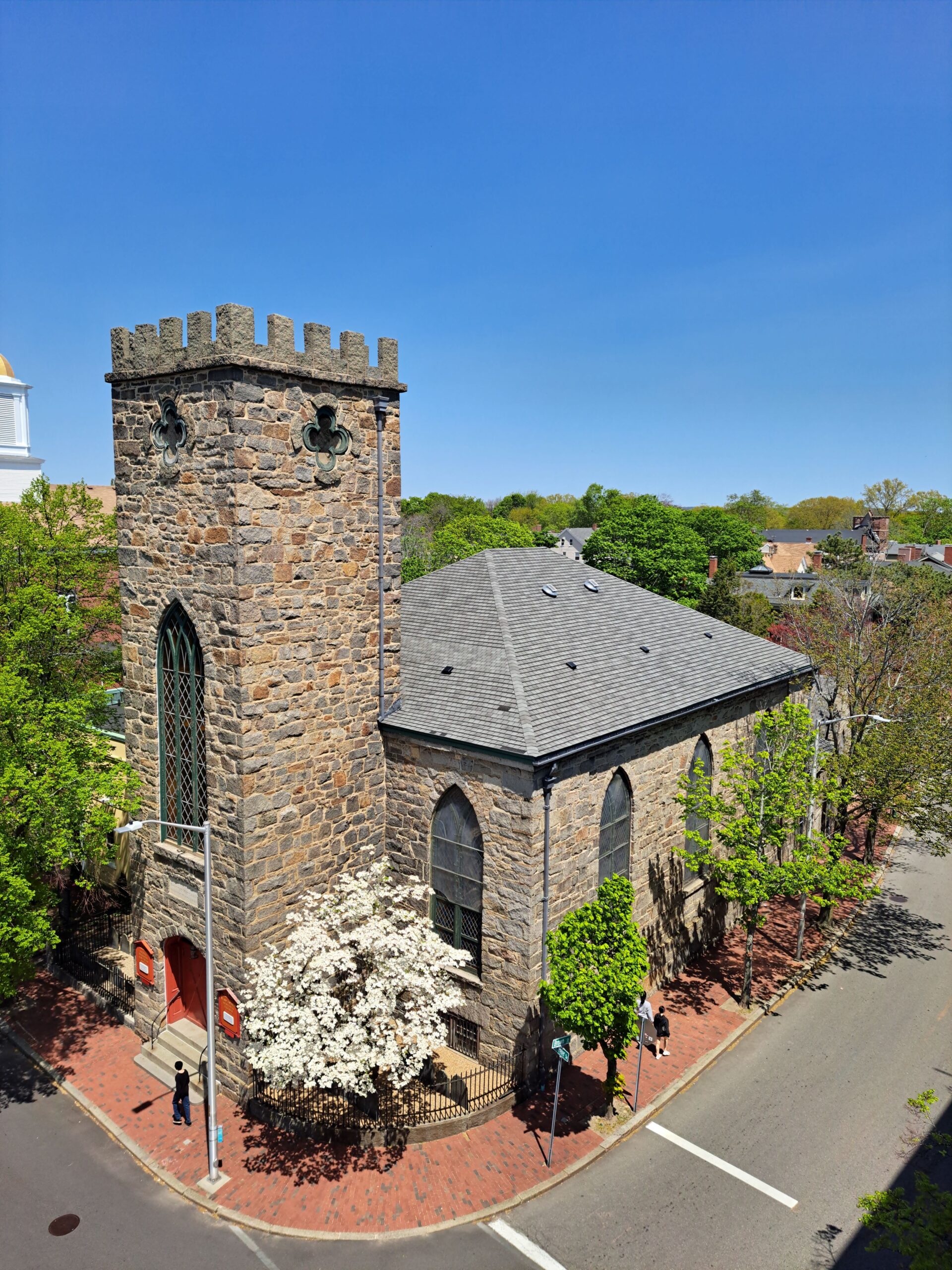By Lily Hamilton, Associate Director of National Fund for Sacred Places
The National Fund for Sacred Places is a program of Partners for Sacred Places, in collaboration with the National Trust for Historic Preservation. Through our work at the National Fund, Partners is able to provide catalytic grants between $50,000 and $500,000 to houses of worship that are undergoing once-in-a-generation historic preservation projects. Participants in the National Fund receive comprehensive training and technical assistance to help them in the capital project planning and fundraising process.
In 2023 the National Fund was able to award more grants than ever before: 16 congregations will receive catalytic grant awards and will be provided pro bono technical assistance by Partners’ staff. The most recent cohort of grantees brings together a diverse group of faith communities who steward some of the nation’s most significant sacred places, selected from 371 applicants.
Each of the grantees tells a profound story about the importance of sacred places to our communities. Four are profiled below, all sharing similar experiences of adapting to demographic change and development over time.
Breakers Covenant Church International
Detroit, Michigan
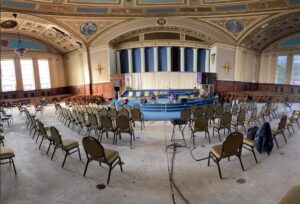
Interior of Breakers Covenant Church International, Detroit, MI. Eyegauge Media, LLC.
Like dozens of predominantly African American congregations across the United States, Breakers Covenant Church International made its home in a former synagogue, Temple Beth El. Demographic changes caused by the Great Migration (when in the 20th century six million Black Americans moved from the South to Northern, Midwestern, and Western states to escape Jim Crow) and the movement of whites – both Jewish and Christian – to the suburbs, leaving their historic buildings behind. Detroit’s North End neighborhood was no exception. Temple Beth El, designed by Albert Kahn and constructed in 1922, was purchased by a Black congregation in 1974. Breakers Covenant is the third Black congregation to steward the original building, and has honored its history by forming a faith partnership with congregation Temple Beth El. Listed on the National Register of Historic Places, it is considered a major monument of early 20th-century Classical Revival style. The domed sanctuary boasts frescoed walls and ceiling depicting historic Jewish events and individuals. Original Jewish iconography and verses remain throughout the building, and are diligently stewarded by members of Breakers Covenant. Breakers Covenant is committed to serving the surrounding North End neighborhood through programs such as emergency financial assistance, social activities for older adults, youth enrichment, and counseling services.
Alrasool Islamic Center
Taylorsville, Utah
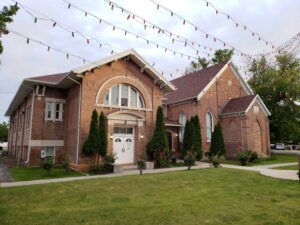
Exterior of Alrasool Islamic Center, Taylorsville, UT. Trent Nelson.
Alrasool Islamic Center resides within a former Mormon chapel, built by the Church of Jesus Christ of Latter-day Saints in 1894. As Mormonism grew throughout the 20th century, its chapels came to serve narrowly defined religious and cultural functions. Hundreds of early assembly hall-type chapels, like the current building occupied by Alrasool Islamic Center, were demolished to make way for massive new buildings that responded to the growing needs of the Church. Although the building has changed hands several times, it has survived waves of demolition and development around it, and always served as a place of community worship.
Alrasool’s congregation reflects the United State’s involvement in the Middle East over the past several decades. The congregation was established by a handful of young Shi’a men who immigrated to the United States after fleeing the establishment of the Iranian Republic, the rise of Iraq’s Saddam Hussein, and the subsequent Iraq-Iran War. Alrasool received more waves of immigrants following the invasions of Iraq and Afghanistan and the recent American withdrawal from Afghanistan. Because of this, Alrasool’s community programming focuses significantly on immigrant outreach, special education classes for couples and families, and youth Islamic courses. Alrasool’s work goes far beyond the limits of their worship community—they serve as an important resource for interfaith dialogue and collaboration, hosting students from Utah high schools and universities who are interested in learning more about Shi’ism and Islamic culture. Alrasool Islamic Center is the first mosque awarded a grant by the National Fund for Sacred Places.
St. Peter’s-San Pedro Episcopal Church
Salem, Massachusetts
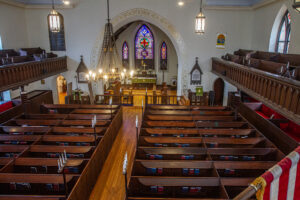
Interior of St. Peter’s-San Pedro Episcopal Church, Salem, MA. Bruce Christopher.
The congregation at St. Peter’s Episcopal Church predates the American Revolution and reflects several chapters in our nation’s history. The current building, designed by Isaiah Rogers, was built in 1833 to replace the original pre-Revolution church building. The original land where the church sits was given to the congregation by Salem’s wealthiest merchant, Philip English, who was accused in the 1692 Witch Trials and narrowly escaped with his life.
In 2008, St. Peter’s combined with a Latino congregation that had been evicted from its prior building. Overnight, the parish was transformed—members of St. Peter’s were prompted to reckon with the role that racism and privilege play in their community, and how they could become an inclusive, welcoming community. The parish now refers to itself as St. Peter’s-San Pedro to reflect its bilingualism and shared leadership. As immigration from Central and South America has increased over the last 30 years, many faith communities are learning how best to welcome new arrivals and meet the needs of immigrant communities, who often face challenges and discrimination.
First Bryan Baptist Church
Savannah, Georgia
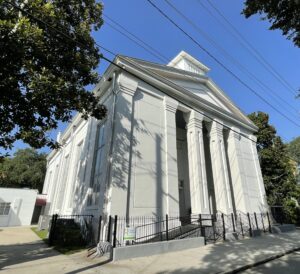
Exterior of First Bryan Baptist Church, Savannah, GA. Historic First Bryan Baptist Church.
In 1788, Andrew Bryan, an enslaved man who purchased his freedom, formed a congregation of formerly enslaved people seeking a community of worship. In 1793, Bryan purchased a parcel of land in the Middle Oglethorpe Ward of Savannah. This is where the current church building, which was erected in 1873 and designed by civil engineer John B. Hogg, stands. It is the oldest parcel of real estate continuously owned by African Americans in the United States.
First Bryan Baptist Church is an integral part of the Yamacraw Village neighborhood and is immediately adjacent to a historic public housing complex bearing the same name. The complex is slated to be demolished this year, and members of the church are leading efforts to oppose the demolition. As neighborhoods across Savannah face ongoing gentrification and displacement, First Bryan stands out as an advocate for inclusive development and people-centered historic preservation.
Despite weathering many changes over time, all of the congregations admitted into the National Fund share a high level of resilience and adaptability. They are able to meet challenges when they arise, and adopt new ways of serving their communities as they evolve. One constant remains: historically and architecturally significant buildings that stand the test of time, and have earned the opportunity to be revitalized through support from the National Fund for Sacred Places.
